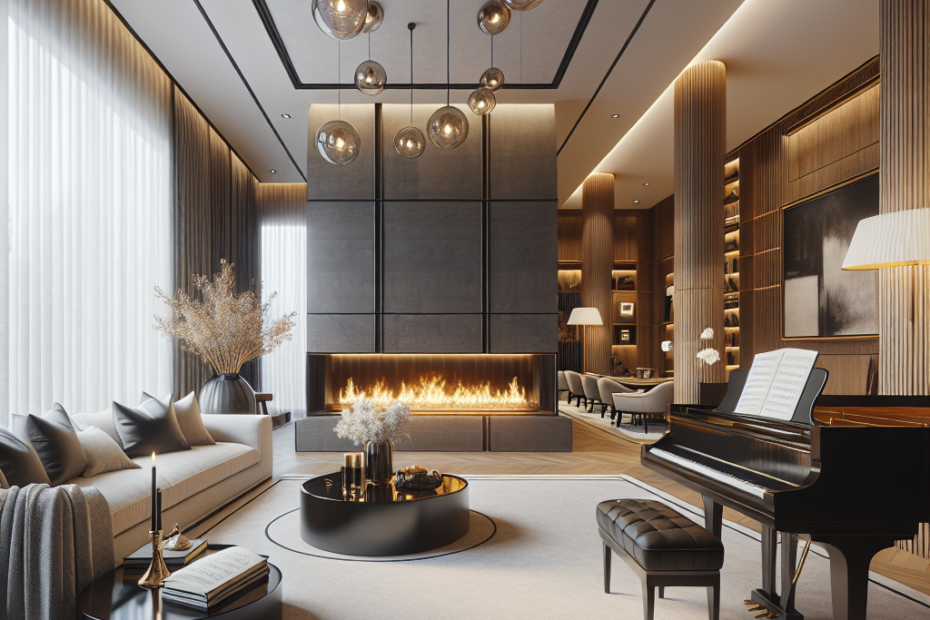The Importance of Focal Points in Interior Design
When people walk into a room, their eyes need to land on something interesting right away. That’s where focal points in design come in. They make spaces look organized and help show off the main features of a room. This blog post will show why focal points are key in interior design and how to use them effectively.
Why Focal Points Are Important
Focal points in design are essential because they draw attention. They act as visual anchors that keep eyes focused. Without them, rooms can look chaotic and uninteresting. According to a survey by Houzz, 70% of interior designers believe that focal points are the most crucial part of room setup. Imagine walking into a room and having no idea where to look first. That’s what happens without a focal point.
Types of Focal Points
There are different types of focal points. Here are some common ones:
- Architectural Features: Think fireplaces, large windows, or built-in bookshelves.
- Artwork: A big painting or a gallery wall can be a perfect focal point.
- Furniture: Statement furniture pieces like a grand piano or a unique coffee table.
- Lighting: Chandeliers and large pendant lights can also serve as focal points.
- Accent Walls: A wall with a different color or pattern can catch the eye instantly.
Architectural Features
Architectural features are natural focal points in design. They often don’t need any extra work to stand out. For instance, a fireplace in a living room acts as a gathering spot and automatically attracts attention. Big windows not only let in natural light but give a beautiful view that captures the eye.
Artwork
Artwork adds personality and makes a significant impact. According to Artsy, homes with prominent artwork are 30% more likely to be perceived as stylish and inviting. A large painting or a collection of smaller pieces can instantly transform a space.
Furniture
Statement furniture can also serve as a focal point. A designer couch or a vintage dining table can become the centerpiece of a room. It’s about finding that one special piece that stands out.
Lighting
Lighting is often underestimated but is incredibly powerful. A beautiful chandelier or an oversized pendant light can draw the eyes upward and highlight other features in the room.
Accent Walls
Accent walls bring in color and interest. They can be painted in a bold color, covered with wallpaper, or designed with wood panels. This strategy is straightforward and effective in creating a focal point.
How to Create a Focal Point
Creating a focal point in design doesn’t have to be complicated. Here are some simple steps:
| Step | Action |
|---|---|
| 1 | Identify the most visually appealing element in the room. |
| 2 | Choose complementary elements to enhance the focal point. |
| 3 | Use color and lighting to draw attention to the focal point. |
| 4 | Ensure the focal point does not clash with other elements. |
To create a focal point, first identify the most striking feature in the room. Then, use colors, lighting, and decorations that enhance this element. For example, if a room has a stunning fireplace, arrange seating around it and use complementary colors and lighting to highlight it.
Common Mistakes to Avoid
While creating focal points is important, there are common mistakes to avoid:
- Having too many focal points can confuse the eye and make a room look cluttered.
- Ignoring balance – the focal point should not overshadow the entire room.
- Not aligning furniture or décor to highlight the focal point.
Key Takeaways
- Focal points in design draw the eye and make spaces feel organized.
- Types of focal points include architectural features, artwork, statement furniture, lighting, and accent walls.
- Creating a focal point involves identifying a key feature and enhancing it with complementary elements.
- Avoid having too many focal points and ensure balance in the design.
FAQ
1. What is a focal point in interior design?
A focal point is an area in a room that attracts immediate attention and sets the tone for the rest of the space.
2. Can a room have more than one focal point?
While it is possible, it’s generally best to have one primary focal point to avoid visual confusion.
3. How can lighting create a focal point?
Lighting such as chandeliers, pendant lights, and spotlights can create focal points by drawing attention upwards or highlighting specific areas.
4. Why are accent walls effective focal points?
Accent walls are effective because they use color and texture to immediately draw the eye.
5. What should one avoid when creating a focal point?
Avoid having too many focal points, not balancing the rest of the room, and ignoring the arrangement of furniture and décor.
